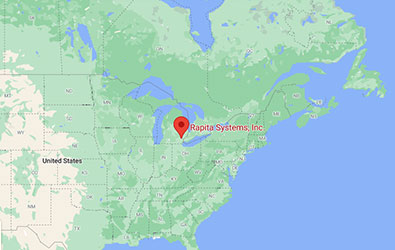Rapita Systems Ltd. today announced the latest release of version 2.2 of its innovative RapiTime software toolset. RapiTime is aimed at engineers developing real-time, embedded software for electronics systems in the avionics, defence, aerospace and automotive industries. Primarily designed to provide timing analyses, such as worst-case execution time (WCET), for embedded software running on most microcontrollers, RapiTime 2.2 also has wider uses in software debugging and monitoring test code coverage.
Dr Guillem Bernat, Rapita Systems’ CEO, is keen to explain how RapiTime can revolutionise the way engineers develop embedded code.
“For the first time it is possible to integrate timing analysis into the software development cycle. It is the natural way to develop reliable, real-time code – gathering timing data with each test cycle, and using the data to prioritise code improvements. And it is only possible with RapiTime. This is a major breakthrough” he continues, “because traditionally, worst-case execution time analysis happens at end of the development cycle, even though it is vital to understand the timing behaviour of time-critical code.”
Dr Andrew Coombes, Marketing Manager, believes that the potential productivity improvements to customers mean RapiTime 2.2 will quickly pay for itself.
“Once RapiTime has instrumented the code, you can capture trace data with every test run. The timing data provides a wealth of information to the users. For example colour coding of the source means engineers can easily identify timing problems. It’s not just about timing; you can find out which code has not run during testing. You can even use the trace data to generate a list of timestamps and source code locations, which is an invaluable debugging tool. For example, engineers can trace back through a sequence of line numbers to find the code that was executing just before a software crash. These tools have the potential to provide huge productivity improvements; it’s like adding an extra engineer to your team.”
Benefits provided by RapiTime’s new and improved features include:
- Reduce effort identifying which code to optimize using color-marked source code
- instantly find code that is the source of timing problems with both high watermark path and WCET path clearly marked.
- focus testing on key sections of code and reduce test-time on expensive rigs.
- easily check test coverage to identify code that is not executed code during testing.
- Fully instrument code with minimal overheads using RapiTime’s unique Idpack feature, which allows instrumentation to be implemented with writes to as few as 2 bits of output ports.
- Demultiplex pre-emptive code into several traces, one for each task or thread.
- Annotate mutually exclusive paths to improve to the accuracy of the WCET analysis.
- adds instrumentation to source code
- measures a range timing data for software applications
- calculates worst-case execution times (WCET)
- determines code coverage
- provides easy-to-read charts and tables of timing data to guide your optimization activities
- enables ongoing assessment of optimization impact.

 SAIF Autonomy to use RVS to verify their groundbreaking AI platform
SAIF Autonomy to use RVS to verify their groundbreaking AI platform
 Hybrid electric pioneers, Ascendance, join Rapita Systems Trailblazer Partnership Program
Hybrid electric pioneers, Ascendance, join Rapita Systems Trailblazer Partnership Program
 Magline joins Rapita Trailblazer Partnership Program to support DO-178 Certification
Magline joins Rapita Trailblazer Partnership Program to support DO-178 Certification
 How to certify multicore processors - what is everyone asking?
How to certify multicore processors - what is everyone asking?
 Data Coupling Basics in DO-178C
Data Coupling Basics in DO-178C
 Control Coupling Basics in DO-178C
Control Coupling Basics in DO-178C
 Components in Data Coupling and Control Coupling
Components in Data Coupling and Control Coupling
 DO-278A Guidance: Introduction to RTCA DO-278 approval
DO-278A Guidance: Introduction to RTCA DO-278 approval
 ISO 26262
ISO 26262
 Data Coupling & Control Coupling
Data Coupling & Control Coupling
 Verifying additional code for DO-178C
Verifying additional code for DO-178C
 DO-178C Multicore In-person Training (Bristol)
DO-178C Multicore In-person Training (Bristol)
 XPONENTIAL 2025
XPONENTIAL 2025
 Avionics and Testing Innovations 2025
Avionics and Testing Innovations 2025
 DO-178C Multicore In-person Training (Fort Worth, TX)
DO-178C Multicore In-person Training (Fort Worth, TX)













